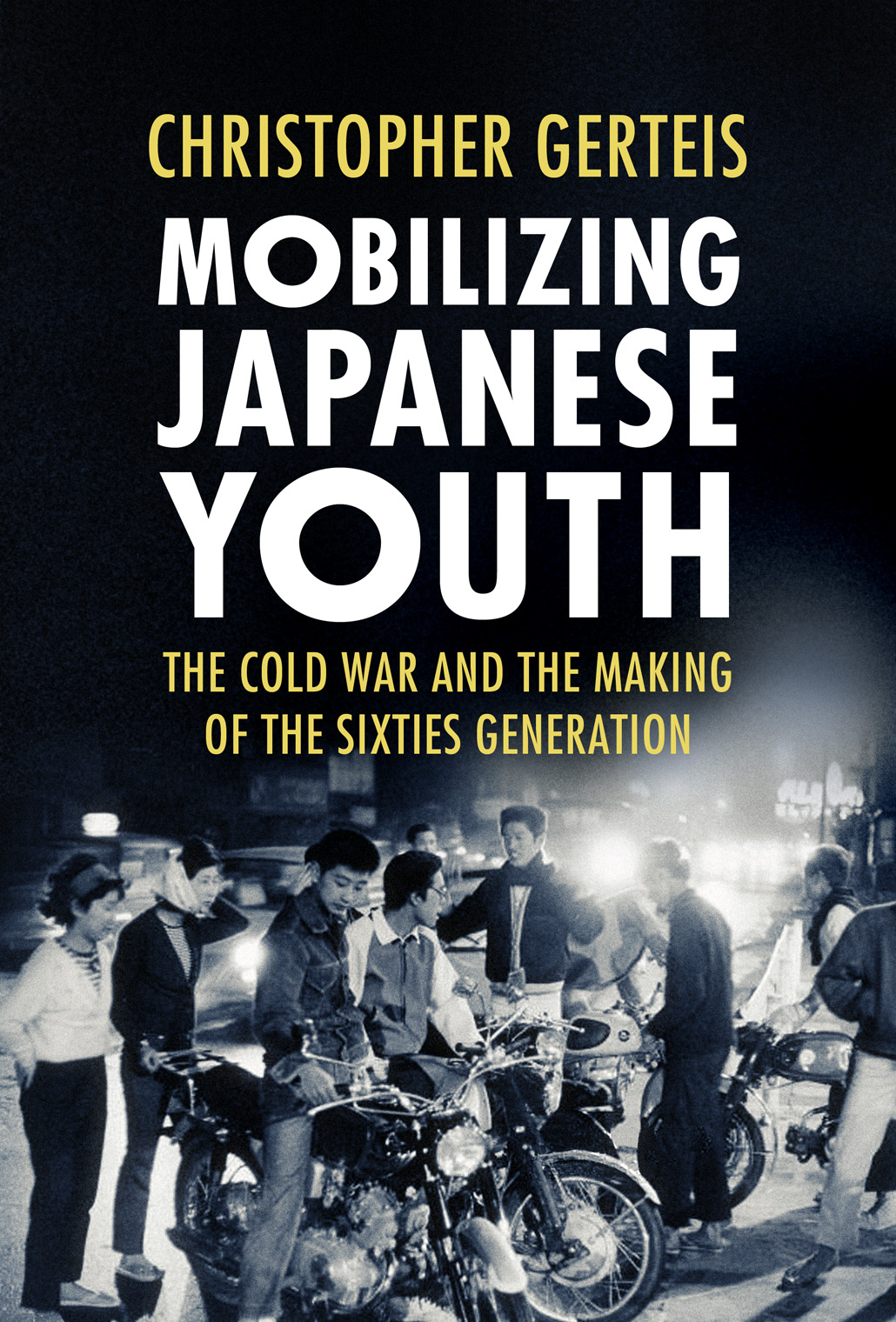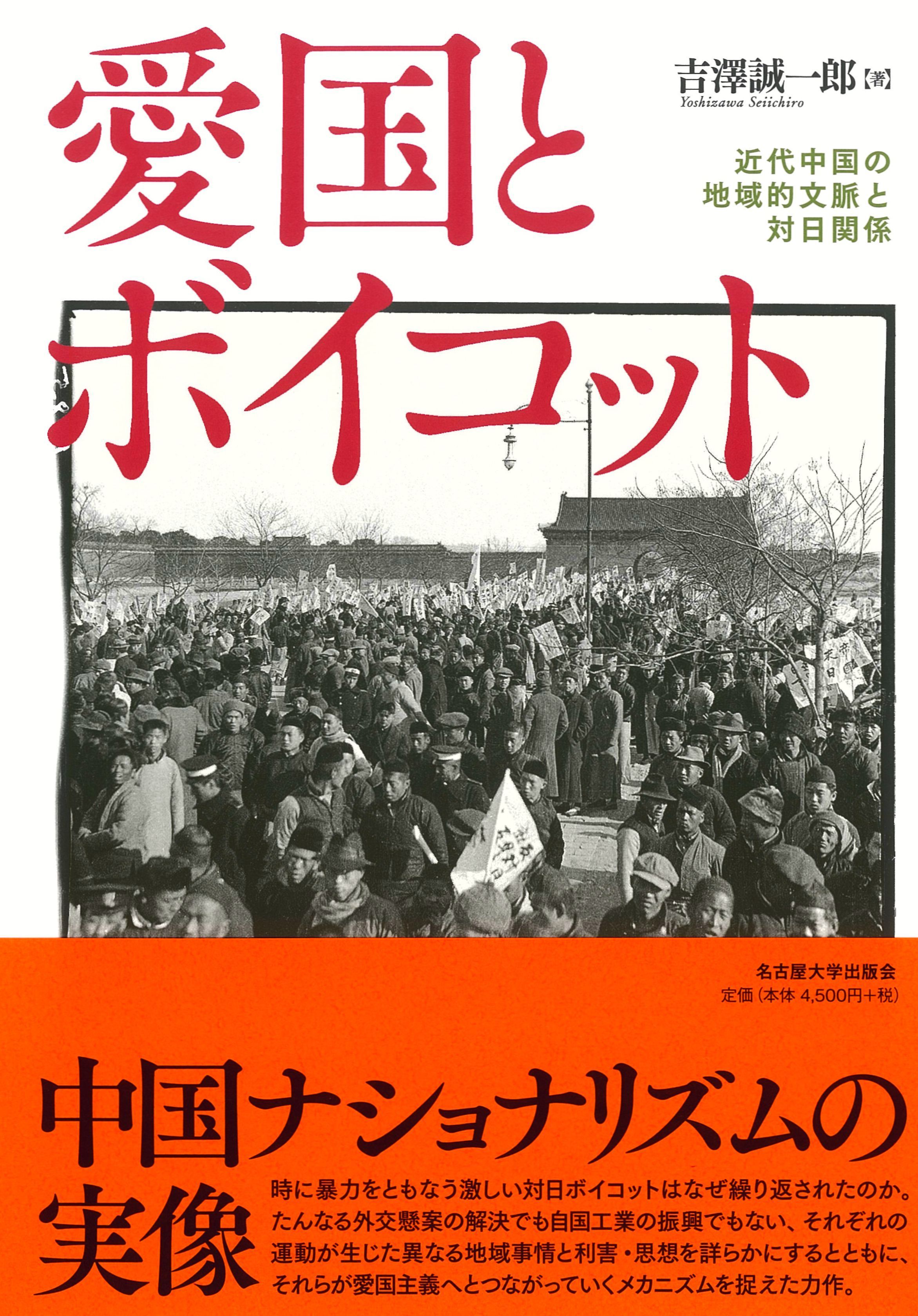
Title
Studies of the Weatherhead East Asian Institute, Columbia University Mobilizing Japanese Youth The Cold War and the Making of the Sixties Generation
Size
192 pages, hardcover
Language
English
Released
July 15, 2021
ISBN
9781501756313
Published by
Cornell University Press
Book Info
See Book Availability at Library
Japanese Page
In Mobilizing Japanese Youth, Christopher Gerteis examines how non-state institutions in Japan—left-wing radicals and right-wing activists—attempted to mold the political consciousness of the nation's first postwar generation, which by the late 1960s were the demographic majority of voting-age adults. Gerteis argues that socially constructed aspects of class and gender preconfigured the forms of political rhetoric and social organization that both the far-right and far-left deployed to mobilize postwar, further exacerbating the levels of social and political alienation expressed by young blue- and pink- collar working men and women well into the 1970s, illustrated by high-profile acts of political violence committed by young Japanese in this era.
Gerteis focuses on how non-state institutions’ leaders shaped youth political consciousness. The book is innovative by focusing on the propaganda produced by these groups with attention to gender, generation, and class. Using the tools of social and cultural historians, Gerteis draws from a fascinating set of materials ranging from Japan Broadcasting Corporation (NHK) surveys through seemingly benign children’s cartoons to pink exploitation films and everything in between. What emerges is a portrait of the transwar-generation’s leadership in both the Far Left and Far Right, reinforcing rather than challenging gender and class norms that ultimately alienated the very youth they sought to recruit. Moreover, the insights provided about the Sixties Generation are remarkably relevant to understanding protest politics today.
As Gerteis shows, Japanese youth were profoundly influenced by a transnational flow of ideas and people that constituted a unique historical convergence of pan-Asianism, Mao-ism, black nationalism, anti-imperialism, anticommunism, neo-fascism, and ultra-nationalism. Mobilizing Japanese Youth carefully unpacks their formative experiences and the social, cultural, and political challenges to both the hegemonic culture and the authority of the Japanese state that engulfed them. The 1950s-style mass-mobilization efforts orchestrated by organized labor could not capture their political imagination in the way that more extreme ideologies could. By focusing on how far-right and far-left organizations attempted to reach-out to young radicals, especially those of working-class origins, this book offers a new understanding of successive waves of youth radicalism since 1960.
Gerteis’ argument that the sixties generation has constrained contemporary Japanese youth’s working lives and political potentialities extends beyond structural constraints in its applicability to further explain current mobilization difficulties at a more granular level. Even with significant public attention about precarity, union efforts to mobilize freeters and other irregular workers in the 2000s largely failed. Despite some limited successes, union politics, rhetoric, and tactics alienated most young irregular workers, squandering an opportunity to attract a new generation to the labour movement. Emergent protest forms since the 2000s using art, music, and dance have attempted to soften the negative and violent associations of street protests associated with the Sixties Generation. Some have described these tactics as feminized to counter the stigmatized masculine confrontational demonstrations that led to the violence in the Sixties Generation protests. Yet these more playful forms of protest, meant to attract a more diverse crowd, are frequently derided and dismissed as ineffectual. Even when the Student Emergency Action for Liberal Democracy (SEALDs), as the most publicly visible youth protest movement since the 1970s, attempted to position themselves as regular students taking a stand to defend Japan’s constitution from hawkish revisionists, they found themselves relentlessly attacked by both the Far Left and Far Right as being too bourgeois, immature, and disconnected. The Far Right, in particular, displayed extreme misogyny in their online harassment of female SEALDs members. These few examples suggest that gender, class, and generation continue to bedevil youth mobilization efforts in contemporary Japan in ways not too dissimilar from the past.
(Written by Robin O’Day (University of North Georgia) and Christopher Gerteis, Associate Professor, Institute for Advanced Studies on Asia / 2022)
Table of Contents
1. Unions, Youth and the Cold War
2. The Rise and Fall of the Japanese Red Army
3. Political Alienation and the Sixties Generation
4. Cold War Warriors
5. Motorboat Gambling and Morals Education
Epilogue: Life and Democracy in Postwar Japan
Related Info
Best Book Award, SOAS University of London Research and Knowledge Exchange Prizes 2022.
Interview:
Q&A with the Author: Christopher Gerteis on Japanese Youth Radicalism
https://www.cornellpress.cornell.edu/christopher-gerteis-on-japanese-youth-radicalism/
Reviews
"[Mobilizing Japanese Youth] is innovative by focusing on the propaganda produced by these groups with attention to gender, generation, and class. Using the tools of social and cultural historians, Gerteis draws from a fascinating set of materials ranging from Japan Broadcasting Corporation surveys through seemingly benign children's cartoons to pink exploitation films and everything in between." (Pacific Affairs)
"In Mobilizing Japanese Youth, Christopher Gerteis makes use of various approaches to capture the character of the cultural moment before and after the Asama sanso siege. Gerteis is a seasoned researcher in the history of organized labour in Japan, and in this work he focuses his attention not on what Schieder calls 'the campus-based New Left' but on the decisions and practices of blue and pink-collar workers." (History Workshop Journal)
"[T]he discussion is far-ranging and Gerteis includes diverse sources as well: from activist magazines to punk music lyrics and manga, which give a sense of the wide array of media in which generational identity and mission was defined and expressed." (Japan Forum)
"Christopher Gerteis's Mobilizing Japanese Youth is a timely and informative contribution to the scholarship on youth political mobilization that sheds new light on the topic through its atten- tion to the nexus of gender, class, and generation. Overall, [the book] is a valuable contribution to our understanding of youth mobilization in Cold War-period Japan." (Journal of Family History)
"Christopher Gerteis works with a fascinating range of sources, from labor union publications to agitprop and pink movies, punk music, raunchy sports newspapers, children's cartoons, NHK surveys, and CIA documents to provide a rich image of social ferment at the alienated fringes and in the mainstream of Japanese society during the turbulent 1950s–60s and since." (David Ambaras, North Carolina State University, Raleigh, author of Bad Youth)
"In this useful addition to our understanding of the global 1960s, Gerteis follows attempts on the left and right to mobilize the '60s generation. The work is informed by class and gender perspectives often obscured and offers an alternate view to the typical image of cooptation and political apathy." (Wesley Sasaki-Uemura, University of Utah, author of Organizing the Spontaneous)



 Find a book
Find a book


